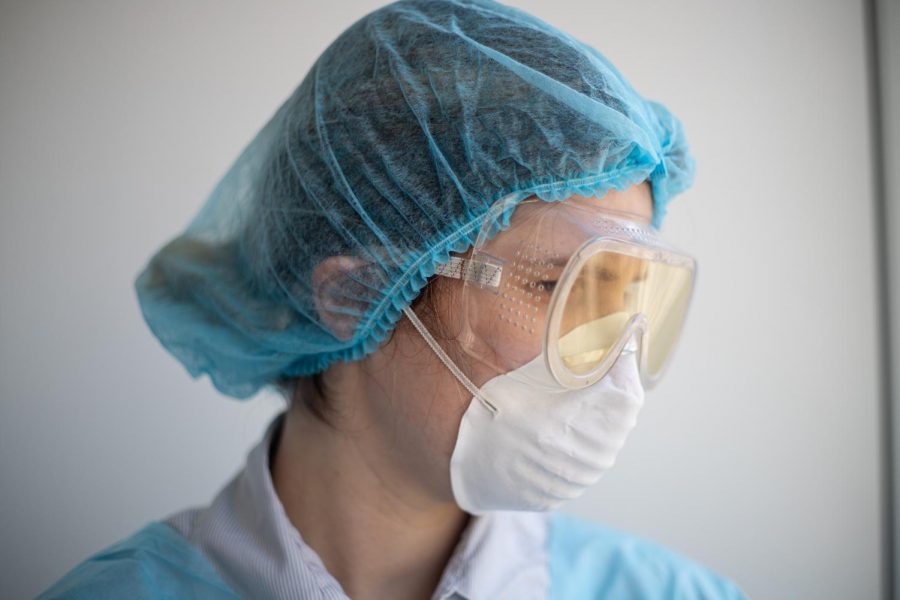I’ve noticed that since the pandemic started, it’s been very hard for me to think about anything other than how the coronavirus has changed my life.
Our anxieties have been fueled by academic concerns, financial uncertainty and the mental toll of being confined to the home. As we navigate this new normal, other matters begin to fade into the background or cease to exist altogether.
Although the 2020 election has abruptly made its way out of the newscycle to make room for an emergent, ever-changing public health crisis, the issues that we as an American electorate concerned ourselves with before March about still exist. And the need to make informed opinions about public policy, especially concerning health and social welfare, has grown more than ever since the arrival of COVID-19.
Healthcare has been a hot topic in the U.S. for quite some time now, and to the detriment of hundreds of thousands of Americans affected by the coronavirus, the pandemic has pulled back the curtain and exposed the American healthcare system for what it is: classist, ineffective and undeniably broken.
Asymptomatic and symptomatic patients alike are unnecessarily furthering the spread of the virus due to the limited availability of testing. Nurses and doctors fear for their lives as they are forced to work with insufficient personal protective equipment. Medical students are prematurely entering the workforce to fill the gap in the workforce. The federal government is unable to adequately supply states with working ventilators or masks. Healthcare inequality has been brought into focus as COVID-19 cases among black and Latinx populations outpace those experienced by their white and Asian counterparts.
The picture we are painting here in the U.S. is not one of a wealthy, well-developed country. Even though Americans outspend the rest of the world by a huge margin when it comes to health care, we fall short in so many other metrics of health. A shortage of nurses and doctors, shorter life expectancy, high amounts of preventable deaths and hospitalizations as well as higher numbers of obese and chronically ill people are merely some of the metrics by which we can see the relative weakness of the U.S. healthcare system.
A significant missing piece to the puzzle of preventive maintenance in the U.S. is the low frequency of physician visits among patients.
This trend could be related to the lack of doctors in the field, which may be related to an even wider series of pitfalls in our health care experience. Lower supply of physicians means those who do practice are burdened with massive workloads. This leads to high wait times in the doctor’s office, less face-to-face patient interaction, burnt-out and overworked doctors and overall dissatisfaction among patients.
This existing cultural approach to patient-doctor relationships has put the U.S. at a disadvantage for tracking and treating the virus. Weak relationships with care providers and poor health maintenance habits may make people less likely to visit the doctor or seek proper testing in a time when our society depends on it.
Another big factor that keeps us from going to the doctor is one that voters and legislators need to be especially mindful of: limited access to medical insurance.
In this critical moment in history, the emergency department seems to be the epicenter of the chaos. Today, many emergency departments are being overwhelmed due to large volumes of coronavirus patients.
However, in a world before coronavirus, emergency departments have been historically overwhelmed because those without access to medical care misuse emergency services for non-emergent situations. People who do not have a primary physician, have restricted access to proper transportation or have low health literacy often improperly use the emergency department. This causes overcrowding in emergency rooms and an increase in wasteful medical spending.
Limited access to healthcare lends itself to a higher prevalence of chronic disease and other pre-existing conditions — and people of color are disproportionately affected by this.
In New York, Latinx folks make up 39% of COVID-19 patients despite representing only 29% of the state’s population. African Americans make up 14% percent of the U.S. population, but an Associated Press analysis showed this population makes up one-third of all coronavirus deaths.
Make no mistake: brown and black Americans do not have a genetic predisposition to coronavirus.
Rather, this abysmal trend in coronavirus deaths is due to the fact that black and Hispanic folks tend to have higher rates of conditions such as obesity and hypertension, which are precursors to heart disease. These minority groups are also less likely to have health insurance coverage. These patterns are likely a reflection of institutional socioeconomic disparities. The World Health Organization cites income, social status and access to health services as a few of the major determinants of one’s health. The cocktail of these trends is likely the cause of higher death rates among black and Hispanic patients with COVID-19.
Coronavirus has rubbed salt on the wounds of our already hurting health system, but I’m optimistic government leaders will have the wisdom to take advantage of the moment and realize the U.S. has the means to make significant policy changes that will lead to a happier, healthier future for all.
This includes the expansion of insurance coverage that all Americans can benefit from. This includes education, social welfare and public health programs that level out health disparities by reducing risk factors for marginalized groups. This includes regulating insurance companies and pharmaceutical companies — despite the influence of special interest groups — to end the unnecessary rise in medical costs.
One day, care providers will have to treat those who received inadequate medical attention for conditions unrelated to the coronavirus due to limited hospital resources. One day, mental health professionals will have to face the beast of traumatized medical workers, people who have been unable to grieve the loss of a loved one and those whose limits have been tested by hardship and social distancing. And when that day comes, I hope we have a reformed healthcare system ready to handle it.
If coronavirus has taught me anything, it is that radical change is possible.
Secure income, housing, food and adequate health care are absolutely vital to our community’s success after COVID-19.
Even though 2020 is already a year we would all rather forget, we need to pay attention now and remember what parts of the existing systems for education, welfare and healthcare worked for us — and what parts didn’t.
And when elections roll around, it is also our responsibility to remember which leaders took the time to listen to the medical experts and extend themselves to the most vulnerable and which ones prioritized political popularity and short-term economic growth over human life.
Jessica Octavio is a sophomore studying microbiology.










